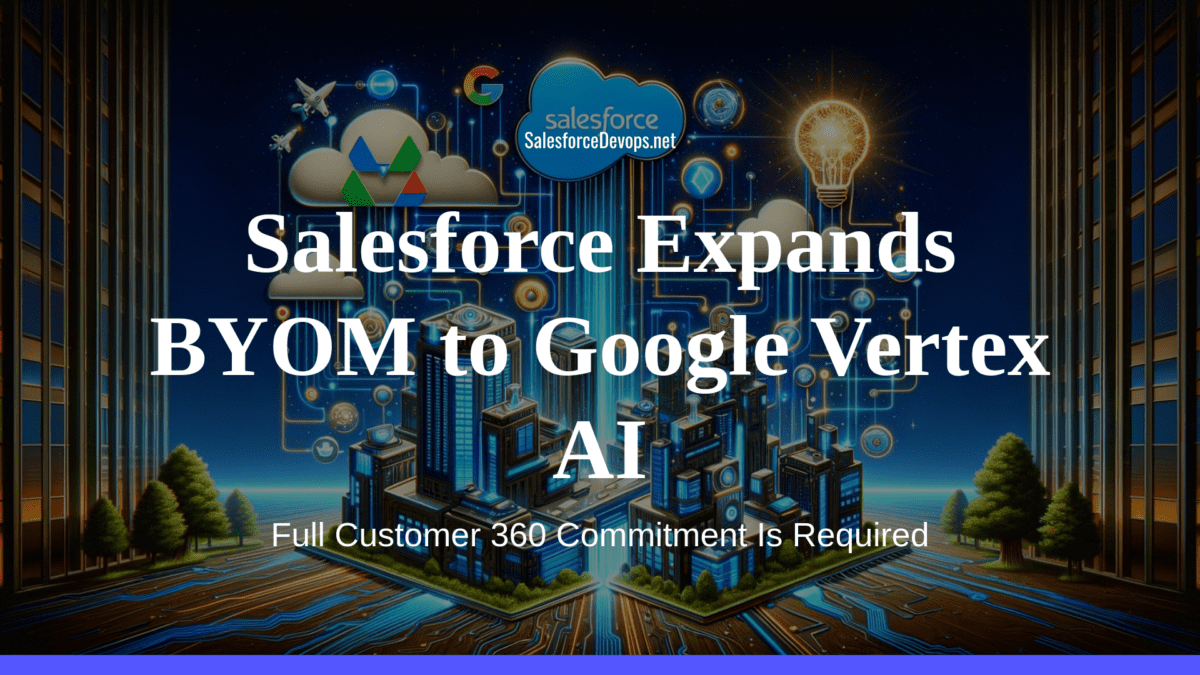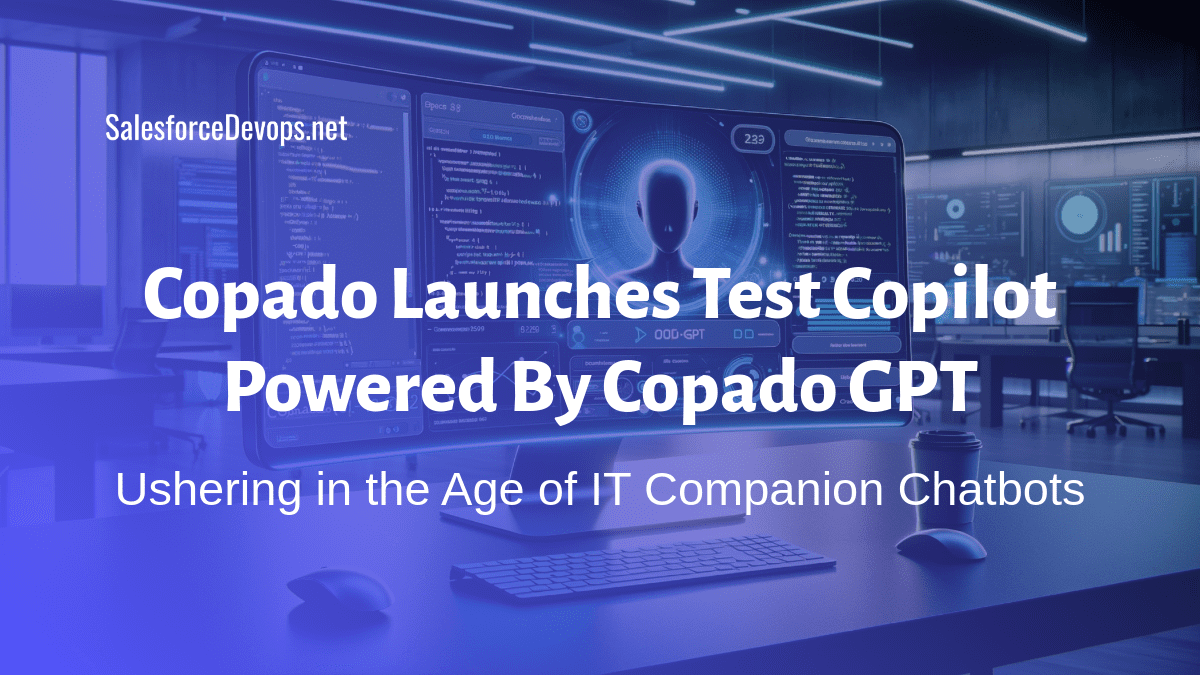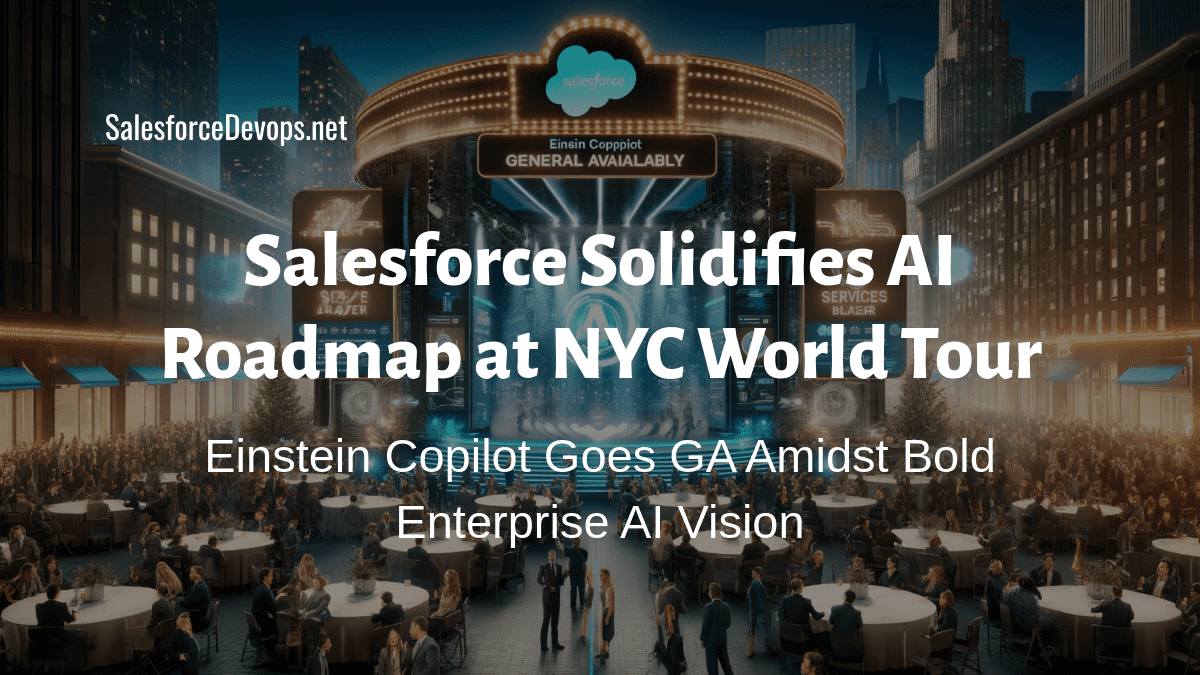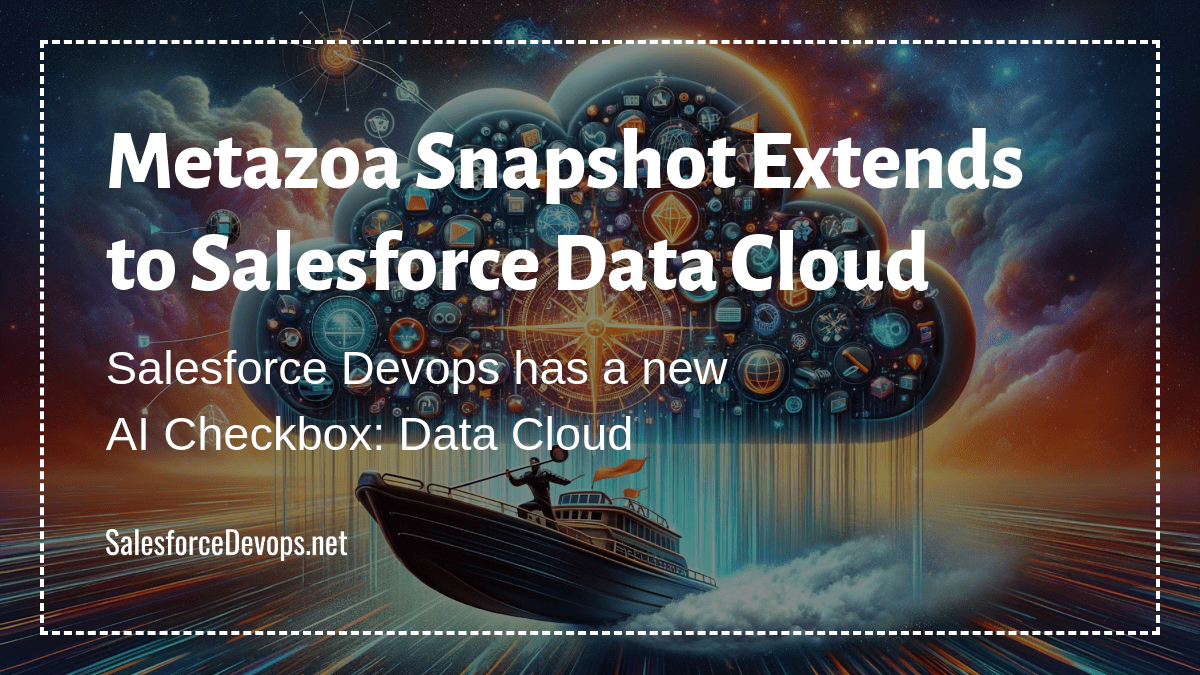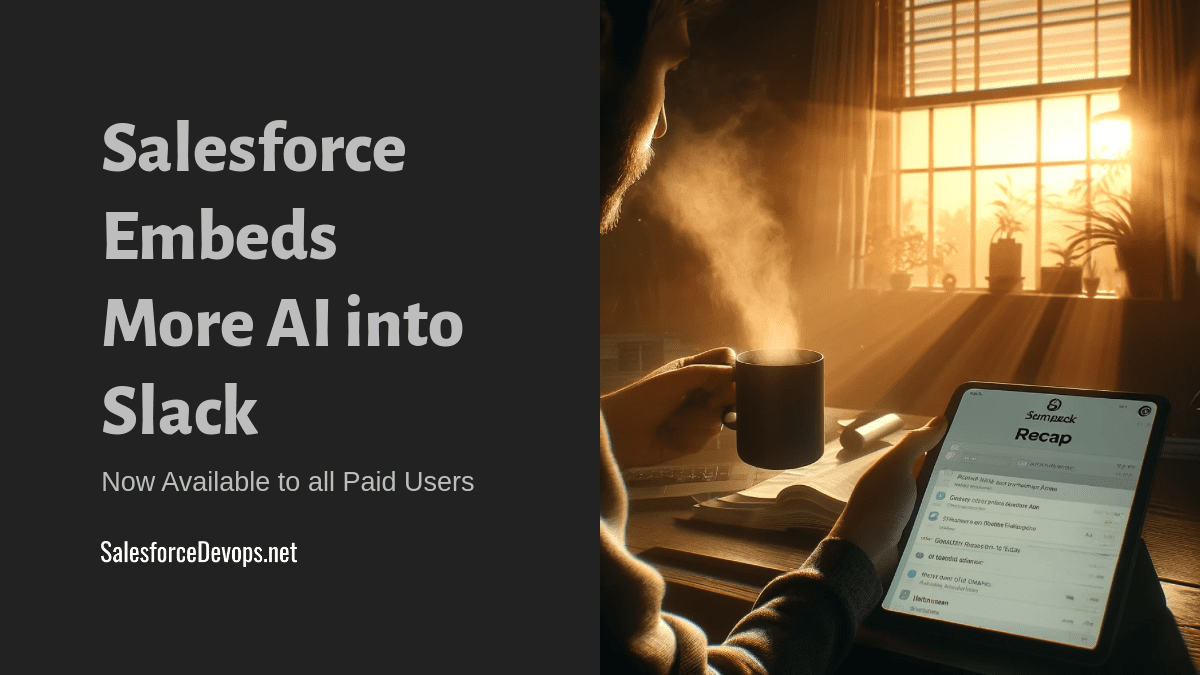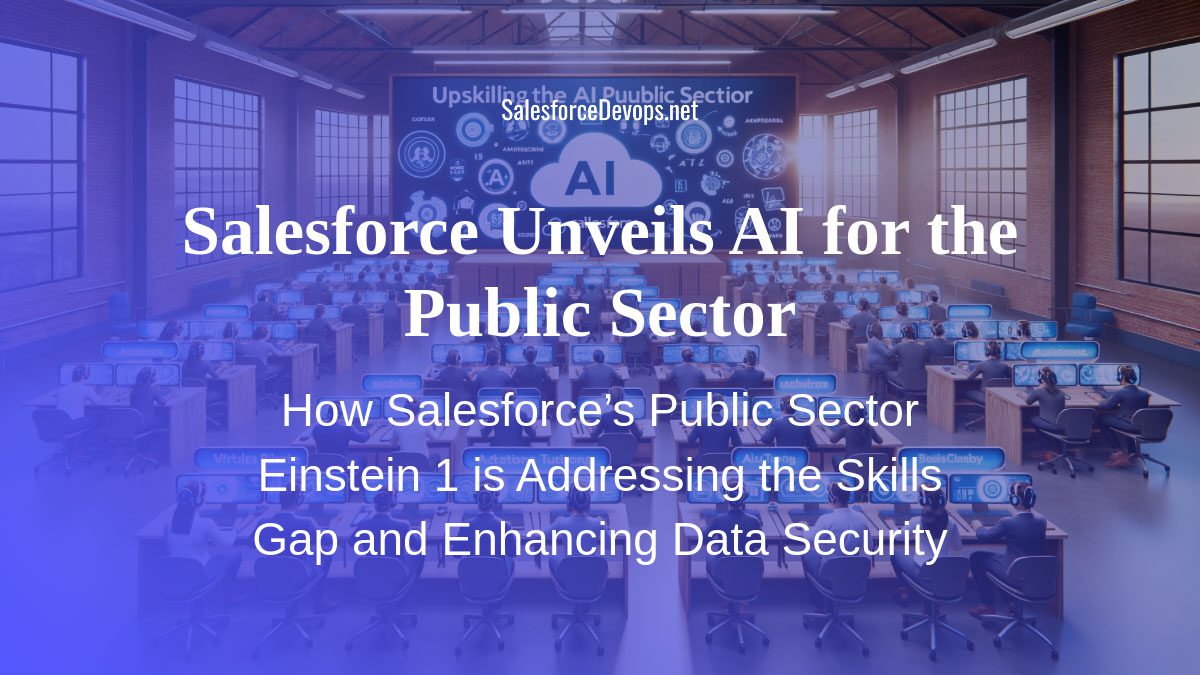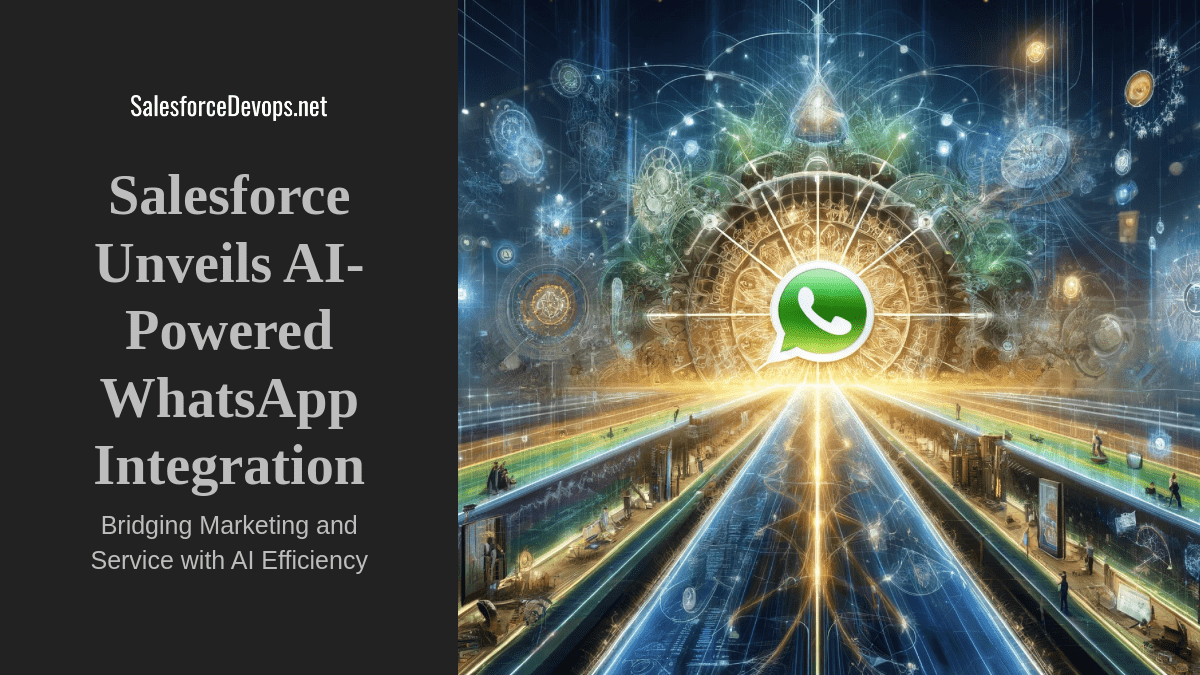Salesforce Expands BYOM to Google Vertex AI
Salesforce announced this week that its Bring Your Own Model (BYOM) capability, introduced in August 2023 on AWS SageMaker, is now generally available for Google Vertex AI. This expansion delivers on Salesforce’s vision for an open AI platform that allows customers to integrate models built anywhere into workflows on Salesforce Customer 360.
However, fully benefiting from BYOM requires significant investment in Salesforce’s Customer 360 data platform. Companies must ingest and unify customer data from across their organization into Salesforce Data Cloud. This enables real-time access to clean, harmonized data for model training in Google Vertex AI or AWS SageMaker.
While BYOM offers flexibility, its value depends on embracing Salesforce’s broader customer data strategy. In this post I break down what’s new with Google Vertex AI integration, how BYOM works, and things to consider before jumping in.
Table of contents
What’s New: BYOM General Availability for Google Vertex AI
When Salesforce launched BYOM in August 2023, it initially only worked with Amazon SageMaker. Last week’s announcement now makes BYOM generally available for Google Vertex AI in addition to SageMaker.
This release delivers on Salesforce’s plan to support any external AI platform, not just AWS. It stems from an expanded partnership with Google Cloud announced earlier this year.
Specifically, new BYOM capabilities for Google Vertex AI include:
- Authentication using Google Service Account credentials.
- Streaming ingestion to automatically update models with new Customer 360 data.
- Invocable actions in Flow Builder and Apex to generate and apply predictions.
- Query API for on-demand predictive insights.
These mirror existing integration options for AWS SageMaker. BYOM aims to provide a consistent way to register external models and leverage them within Salesforce apps and workflows.
How BYOM Works: Connecting External Models to Customer 360 Data
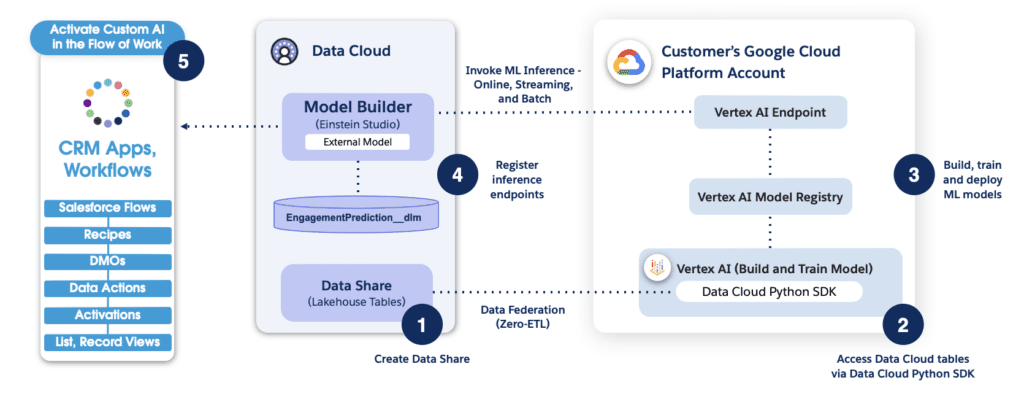
BYOM allows data scientists to build and train AI models in Google Vertex AI or AWS SageMaker using live Salesforce customer data. It eliminates the need for complex ETL by streaming Data Cloud objects directly to the external platform.
Here is how the process works:
- Ingest data from across the organization into Salesforce Data Cloud. This provides a unified customer data platform.
- Connect Data Cloud to Google Vertex AI or AWS SageMaker using built-in connectors and streaming integration.
- Build custom models leveraging real-time customer data and AI platforms’ tools like automatic hyperparameter tuning.
- Register models within Salesforce Einstein Studio for BYOM. This allows pushing and pulling predictions.
- Embed predictions in Salesforce workflows and apps via Flow, Apex, and APIs. For example, personalized product recommendations.
BYOM removes the complex ETL required when training external models separately from customer data. Direct connectivity accelerates development and keeps predictions relevant.
Key Considerations Before Adopting BYOM
Opening Salesforce data to external AI platforms provides flexibility. But utilizing BYOM involves extensive investment in Customer 360.
Here are some key considerations:
- Data unification – BYOM depends on ingesting and harmonizing data from across your company into Data Cloud. This significant effort lays the foundation.
- Ongoing governance – Proactively managing data quality, security, and compliance is mandatory when piping data to external systems. Salesforce provides guardrails to limit risks.
- In-house expertise – Getting value from BYOM requires data engineers and data scientists. It’s oriented towards sophisticated enterprise ML teams, not business users.
- Change management – Embracing BYOM means adopting Salesforce Customer 360 as your customer data platform. Requires aligning stakeholders across IT, customer success, and the C-suite.
- Total cost – While bypassing ETL offers savings, overall investment for Customer 360 and Data Cloud is substantial. The premium version required for BYOM starts at $300 per user/month.
For companies already committed to building unified views in Salesforce, BYOM can accelerate AI initiatives. But those just starting face a heavy lift to gain benefits. Still, BYOM provides a path to leverage preferred external platforms while avoiding moving data.
Salesforce is banking on BYOM convincing more enterprises to jump into Customer 360. The incentive is to connect architectural silos directly to cloud AI through Einstein Studio. This aims to increase ROI by embedding predictions in real time across the organization.
But those intrigued by BYOM’s possibilities should validate its value case for their maturity, resources, and culture. Confirm organizational alignment on making Salesforce the customer data platform before proceeding.
Einstein Studio Bridges Data with External AI Platforms
Salesforce positions Einstein Studio as the control panel for managing BYOM. It provides tools to connect external models like Google Vertex AI and SageMaker with Salesforce data.
Key capabilities offered by Einstein Studio include:
- Metadata-driven configuration – Einstein Studio leverages Salesforce’s metadata framework to enable declarative integration without code. Admins can map objects, fields, and permissions to automate data connectivity.
- Drag-and-drop workflow design – Low-code tools like Flow Builder allow admins to rapidly build UIs and business logic around predictions without developer help.
- Integration with Einstein Predictions – In addition to BYOM, data scientists can also leverage Salesforce’s pre-built predictive models for common use cases like lead scoring.
- Model monitoring and Explainability – Once in production, models can be monitored for drift and bias. Transparency tools provide visibility into model outcomes.
- Governance guardrails – Controls are applied automatically based on Salesforce object properties and user permissions. For example, restricting PII exposure.
- Usage analytics – Dashboards track adoption across pilots and production to optimize rollouts. Data informs strategy and change management.
Einstein Studio exemplifies Salesforce’s metadata-driven platform approach. It aims to empower admins to harness data AI with minimal code. Salesforce is betting BYOM adoption ultimately depends on ease of use.
However, data teams must still do the hard work of building and validating models externally. Einstein Studio just makes it simpler to connect the outputs to Customer 360. It does not replace the need for real data science expertise.
Weighing the Pros and Cons of Salesforce’s BYOM
BYOM delivers clear benefits but also involves notable limitations and risks. Here is an objective look at the key pros and cons for enterprises evaluating the offering:
Pros
- Flexibility to leverage preferred external AI platforms and existing investments.
- Near real-time model training using live Salesforce customer data.
- Eliminates complex ETL processes to prepare training data.
- Tight bi-directional integration between predictions and Salesforce apps.
- Leverages Salesforce’s enterprise-grade trust architecture for responsible AI.
Cons
- Requires large investment in Salesforce Customer 360 data platform.
- Data quality and governance challenges piping info to external systems.
- Oriented towards sophisticated data science teams, not business users.
- Risk of fragmented insights if not all data unified in Customer 360.
- Overall total cost of ownership can be very high.
Salesforce is targeting BYOM at large enterprises with big budgets and commitment to unified customer data. For these customers, BYOM empowers scaling AI by removing friction between model building and deployment.
But companies with more limited resources or fragmented legacy infrastructure may find transitioning to Salesforce-centric AI prohibitive. Much depends on current data maturity and possibility of change management success.
Salesforce BYOM Strategy Analysis
BYOM offers an intriguing vision of seamless model integration without disruptive ETL projects. Additional support for Google Vertex expands the value proposition beyond just AWS. However, Salesforce is clearly using BYOM as a carrot to push Customer 360 adoption. The real obstacle for enterprises will be data unification, not connecting to SageMaker or Vertex AI.
For those able to surmount challenges around change management and data governance, BYOM provides powerful leverage. It enables transformative collaboration between data scientists and business teams.
But BYOM is not a shortcut for kickstarting AI transformation. It offers efficiency gains further along the journey, not at the start. As with any Salesforce solution, benefits rely on users, not just technology.
Those new to enterprise AI or customer data platforms should consider simpler first steps. But sophisticated organizations deep into digital transformation can benefit from BYOM’s disruptive possibilities.
For enterprises able to execute BYOM’s complete vision, it can accelerate the development of exciting, new customer-centric AI applications. But embarking without solid data foundations risks pains outweighing gains. Approach your AI journey with eyes wide open and make judicious choices based on your organization’s unique constraints and culture.
